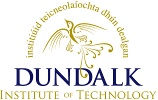Barton, Kevin and Pašteka, Roman and Brady, Conor and Zahorec, Pavel and Papčo, Juraj and Murin, Igor (2013) Searching for hidden chambers at Newgrange Passage Tomb; some results with an evaluation of the multi-method geophysical techniques used. In: Non-destructive Approaches to complex Archaeological sites in Europe: a round-up Radio-Past Colloquium, Ghent, 15-17 January 2013, 15-17 January 2013, University of Ghent.
Preview |
PDF
Download (1MB) | Preview |
Abstract
Newgrange Passage Tomb is 76m in diameter and 12m high. A single 19m inner passage leads to a chamber some 6m in diameter and height. The possibility of further chambers existing has been the subject of interest since the partial excavation completed in 1975. Multiple passageways and chambers exist at nearby tombs at Knowth and Dowth - could there be hidden chambers at Newgrange that could be detected using geophysical methods? We present the results from a multi-method geophysical survey. The principal method used was microgravity which has found hidden cavities in the Great Pyramid at Giza in Egypt. The method has also been used to detect the presence of medieval crypts but there has been little research in the use of microgravity in the detection of chambers in mounds due to their generally small dimensions. The situation in mounds at Brú na Bóinne is different. The major chambers have quite large dimensions, thus enhancing the detection capability of microgravity. A computer simulation to predict the gravity anomaly over the Newgrange chamber was carried out. This showed that the calculated effect on gravity of the chamber volume together with its depth within the mound would produce a measurable negative gravity anomaly. The key objective of the survey was to investigate the potential of the microgravity method in the initial detection of the known chamber and subsequently in searching for possible hidden chambers. The processing and interpretation of the microgravity survey was informed by ground penetrating radar, electrical resistivity tomography, multi-frequency electromagnetic and earth resistance results. Initial gravity measurements were made over and in the vicinity of the known chamber. The position of each measurement point was precisely determined using a combination of differential GPS and laser tachymetry methods. Strong winds at the time of survey required windshields to be used to protect the instruments from gusts and each measurement was verified by repeat readings. The average error from repeated and independently controlled measurement points was +/-15 microGals. This is relatively high but acceptable in the case of this survey. Data were processed to remove the effects of elevation, tidal variation, topography, latitude, and instrument drift. Topography corrections were made using LiDAR data. The output was a gravity anomaly map draped on a 3-D model made from the LiDAR data which presents the properties and geometry of sub-surface inhomogeneities. The map shows a well developed negative anomaly over the centre of the chamber. The size of the anomaly at its centre is several times larger than the precision of the instrument and also the average error of the instruments. Further gravity measurements were made on the mound and in the chamber in order to seek further anomalies and refine the gravity model of the known chamber. The results confirm the measured gravity anomaly is significantly larger than the computed anomaly based on laser tachymetry measurements of the spaceform of the chamber. This leads us to believe there is an unknown feature or structure of low density associated with the known chamber.
| Item Type: | Conference or Workshop Item (Poster) |
|---|---|
| Uncontrolled Keywords: | Newgrange; Geophysics; Microgravity; Chamber; Archaeology |
| Subjects: | Arts and Humanities > Archaeology |
| Research Centres: | Other |
| Depositing User: | Conor Brady |
| Date Deposited: | 13 Mar 2013 09:06 |
| Last Modified: | 11 Nov 2014 16:10 |
| URI: | https://eprints.dkit.ie/id/eprint/300 |
Actions (login required)
 |
View Item |
Downloads
Downloads per month over past year

